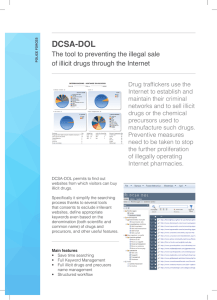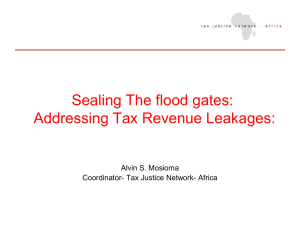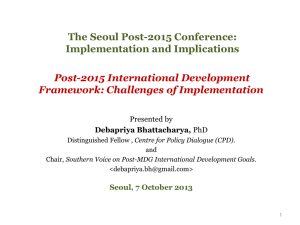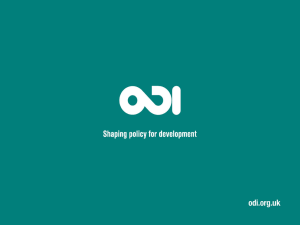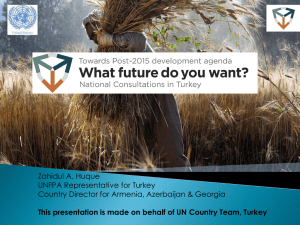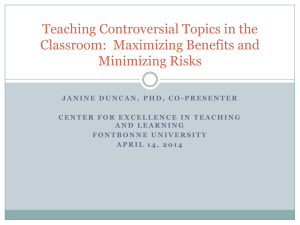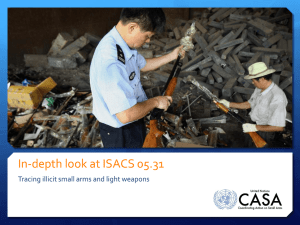Perspectives on Illicit Financial Flows Post-2015
advertisement
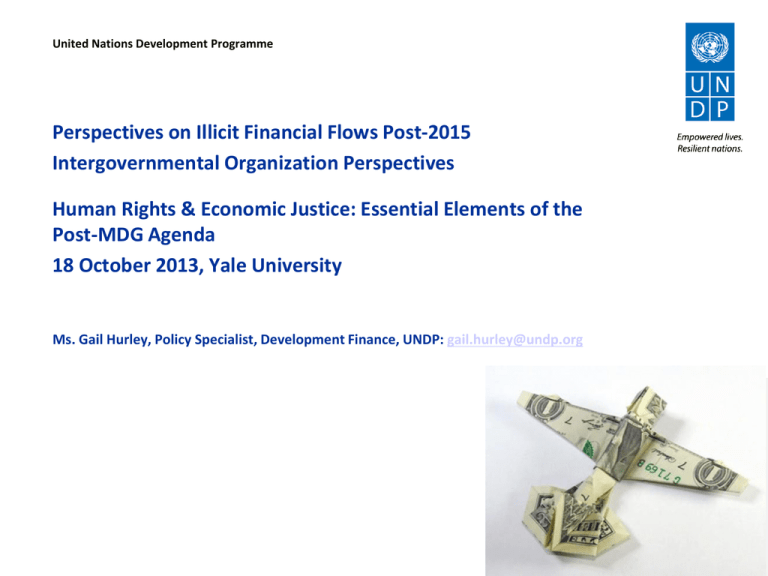
United Nations Development Programme Perspectives on Illicit Financial Flows Post-2015 Intergovernmental Organization Perspectives Human Rights & Economic Justice: Essential Elements of the Post-MDG Agenda 18 October 2013, Yale University Ms. Gail Hurley, Policy Specialist, Development Finance, UNDP: gail.hurley@undp.org Perspectives on Illicit Financial Flows Post2015 Revolution? Evolution? Divine intervention? Perspectives on Illicit Financial Flows Post2015 Unprecedented global consultation on what should succeed the MDGs when they expire in 2015 • National consultations in 88 countries • 11 thematic consultations on issues such as governance, education and health • 1.5 million people have voted in ‘My World’ survey • High Level Panel of Eminent Persons on Post-2015 Perspectives on Illicit Financial Flows Post2015 How will the post-2015 development agreement be paid for: the million (billion, or even trillion) dollar question Where will the money come from and what are the responsibilities of different stakeholders? Where do illicit financial flows fit into this picture? Illicit Financial Flows and the MDGs MDG 8: ‘develop a global partnership for development’ Target 8.A: Develop further an open, rule-based, predictable, nondiscriminatory trading and financial system From an operational perspective, it was absent UN: Incremental progress 2002 UN Monterrey Consensus urged states to finalize United Nations Convention Against Corruption and support the repatriation of funds illicitly acquired to countries of origin, and promote stronger cooperation to eliminate money laundering United Nations Convention against Corruption (2005): States that have ratified the convention commit to: “prevent, detect and deter in a more effective manner international transfers of illicitly acquired assets and to strengthen international cooperation in asset recovery” 2008 Doha Declaration: “It is vital to address the problem of illicit financial flows, especially money laundering. Additional measures should be implemented to prevent the transfer abroad of stolen assets and to assist in the recovery and return of such assets, in particular to their countries of origin, consistent with the United Nations Convention against Corruption” Perspectives on Illicit Financial Flows Post2015 Post-2015: What prospects are there to build on recent momentum? New ‘SDG 8’? How should illicit financial flows be incorporated into the post-2015 sustainable development agreement? Should there be specific goals or targets related to illicit financial flows? If so, what should they look like? Should they apply to all countries? Perspectives on Illicit Financial Flows Post2015 Important progress has been made which can be built-on: • • • • Automatic exchange of tax information Transparency provisions in the extractives sector Asset repatriation Base erosion and profit shifting Perspectives on Illicit Financial Flows Post2015 Concretize and try to secure political commitments on key propositions: • Commitments on country-by-country reporting • Commitments on beneficial ownership • Support countries to build regional agreements to address tax competition and excessive tax incentives • Commitments to assist countries to build the necessary tax capabilities and expertise • An agenda for research and for data collation and dissemination could be defined in a post-2015 agreement In reality, the end-outcome is likely to be a more general statement of intent Perspectives on Illicit Financial Flows Post2015 Inter-governmental committee of experts on financing for sustainable development: http://sustainabledevelopment.un.org/index.php?menu=15 58 Will evaluate proposals and prepare a report on a sustainable development financing strategy for post-2015 Will conclude its work by August 2014 Thank you for your attention! Gail Hurley, UNDP: gail.hurley@undp.org Twitter: @gailmlhurley
